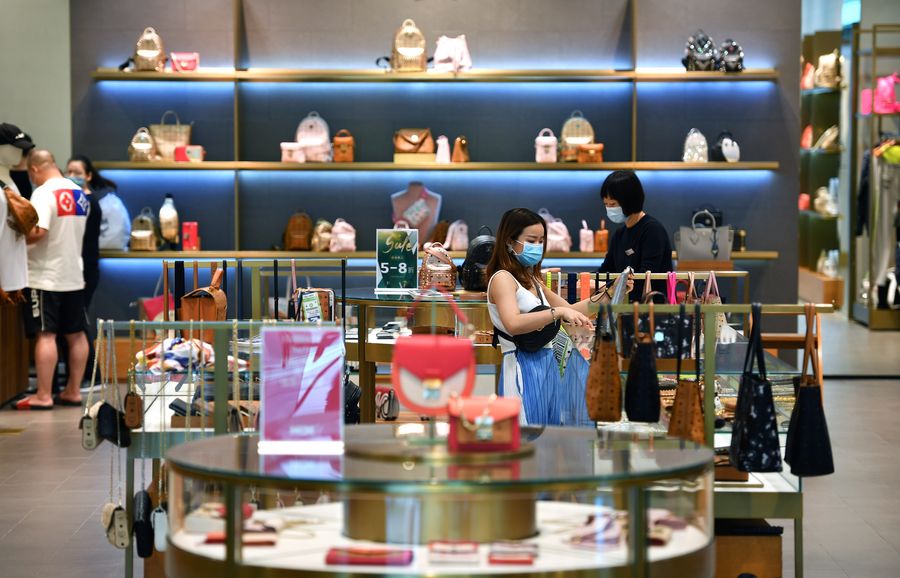Retail to regain bounce after COVID-19 blow

Up to 77 percent of food and beverage retailers said it has become more challenging to meet their financial obligations. F&B sales tumbled by 44 percent in the first quarter, followed by declines in jewelry by 38 percent, clothes by 32 percent, automobiles 30 percent, electric appliances 30 percent and cosmetics 13 percent, the CBRE survey said.
The other concerns of retailers in the Chinese mainland were supply chain disruptions at 36 percent, ensuring safety at 30 percent, the handling of infected cases at 27 percent, and disruptions in online deliveries, it added.
China is the world's second-largest economy and its second-largest consumer market, as well as one of the fastest-growing large markets in the world.
China's share of the global consumer market rose from 3 percent in 1990 to 13 percent in 2018. Online channels grew significantly in the first four months this year, with online sales accounting for a historic high of 24 percent of total retail sales, said a research report by Savills on how China's retail sector coped with COVID-19.
The CBRE report said the pandemic highlighted the importance of online channels, and 27 percent of those polled stated that digital sales comprise part of their core business. It is a trend which is particularly prominent among fashion and apparel retailers.
The report also revealed that 67 percent of Chinese mainland respondents said they intend to increase investment in online shopping apps and delivery services. Some 81 percent planned to make greater use of social commerce, while about one-third of F&B retailers introduced food delivery services during the contagion.
Although shopping malls and retailers have significantly boosted their online presence to engage customers since the outbreak of COVID-19, retailers suggested paying more attention to increasing space efficiency, optimizing the mixture of tenants, improving management capabilities, and better integrating online and offline channels, Xie said.
"People's consumption habit has changed a lot in the past few months because of the epidemic, and this trend may continue in the near term," said Zhang Hongwei, chief analyst with Shanghai-based property consultancy Tospur.
The retail market has become one of the most innovative sectors of the Chinese economy with product categories, retailer business models, distribution and marketing channels, and consumer financing leading the global changes over the past five years, said the Savills report.
It suggested more innovation to adapt to the changing consumer habits and preferences through new technology, online penetration, domestic retailers, new retail categories, as well as mall design and operations.
Though COVID-19 has encouraged the popularity of various online business models, consumers will still return to brick-and-mortar stores for a better retail experience after the epidemic, Zhang said.
"We will see a combination of online and offline business in the middle to long-term for the better development of the retail sector," he added.
Invest in China Copyright © 2024 China Daily All rights Reserved
京ICP备13028878号-6
 京公网安备 11010502032503号
京公网安备 11010502032503号





